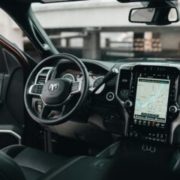Why Choosing the Lowest Cost Auto Insurance Isn’t Always the Best Option
 Being inundated with countless insurance commercials promising the lowest premiums, we often find ourselves wondering if these claims hold true. While saving money on insurance is important, it’s essential to recognize that the lowest premiums often come with the lowest coverage. At our insurance agency, we prioritize ensuring you have adequate coverage over simply offering the cheapest rates.
Being inundated with countless insurance commercials promising the lowest premiums, we often find ourselves wondering if these claims hold true. While saving money on insurance is important, it’s essential to recognize that the lowest premiums often come with the lowest coverage. At our insurance agency, we prioritize ensuring you have adequate coverage over simply offering the cheapest rates.
Determining the insurance coverages you need is a decision best made in consultation with a qualified local insurance agent. We understand that each individual’s insurance needs are unique, and our goal is to provide you with personalized guidance to help you make informed choices.
Let’s explore some of the key auto insurance coverages and discuss whether they may be necessary for your specific circumstances:
Collision Coverage: This protection safeguards your vehicle against damage, regardless of fault. Premiums for collision coverage are influenced by your vehicle’s value. It’s important to consider the value of your car when deciding whether to include this coverage.
Comprehensive Coverage: Comprehensive coverage covers damages to your vehicle resulting from events such as animal collisions, fires, theft, or vandalism. It provides added peace of mind and financial protection in unexpected situations.
Medical Payments: Commonly known as MedPay or PIP, medical payments coverage covers medical expenses resulting from an accident, regardless of fault. It ensures that you receive necessary medical treatment without having to rely solely on personal health insurance.
Uninsured Motorist: This coverage protects you if you’re involved in an accident with an uninsured driver. It provides coverage for both physical damage to your vehicle and bodily injuries you may sustain.
Underinsured Motorist: Underinsured motorist coverage helps bridge the gap when the at-fault driver has insurance but lacks sufficient coverage to fully compensate you for the losses incurred. It offers additional financial protection in such situations.
To illustrate the importance of adequate coverage, let’s consider a couple of scenarios:
Scenario 1: You opt for a liability policy with minimal coverage, such as $25,000 in Property Damage. Unfortunately, you rear-end a brand new Toyota Camry that is valued at $35,000. With your low coverage limits, you are left responsible for the remaining $10,000 out of pocket.
Scenario 2: You are involved in a collision with an uninsured motorist, resulting in significant medical expenses exceeding $50,000. Without uninsured motorist coverage or personal health insurance, and with your auto medical payments coverage limited to $10,000, you are left to bear the burden of the remaining $40,000 in medical bills while pursuing legal action against the uninsured driver.
When it comes to insurance coverage, prioritizing the lowest premiums may not be a prudent decision. By opting for minimal coverage, you risk jeopardizing your financial future. Instead, we encourage you to consider the potential consequences of carrying low limits and to reach out to our insurance agency with any questions or concerns.
Whether you’re in the market for home, auto, boat, or motorcycle insurance, it’s crucial to be aware that the pursuit of the lowest premiums often entails reducing your insurance coverage. Protecting your assets and securing your financial well-being should be paramount. Let us assist you in finding the right balance between cost and coverage, tailored to your specific needs.



 Driving in winter weather conditions can present unique challenges for every driver. However, with the right knowledge and information, you can navigate these conditions safely.
Driving in winter weather conditions can present unique challenges for every driver. However, with the right knowledge and information, you can navigate these conditions safely.
 Mail theft is a pervasive issue across the country, and it’s important to take proactive steps to protect yourself from falling victim to this crime. Thieves often target mail that has not yet been picked up, searching for items such as gift cards, credit card applications, and utility bills that can be used to steal your identity.
Mail theft is a pervasive issue across the country, and it’s important to take proactive steps to protect yourself from falling victim to this crime. Thieves often target mail that has not yet been picked up, searching for items such as gift cards, credit card applications, and utility bills that can be used to steal your identity.